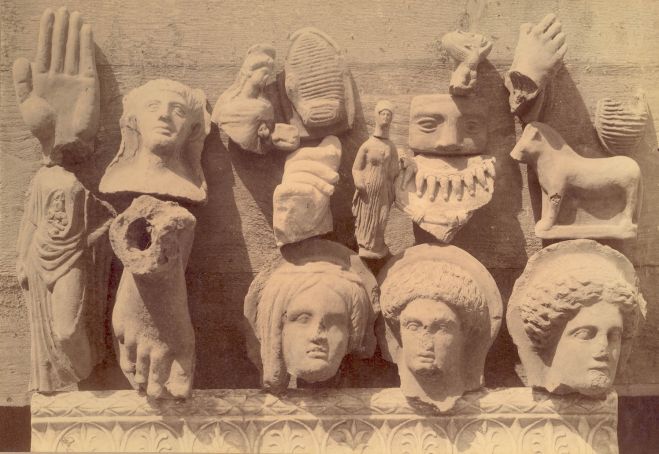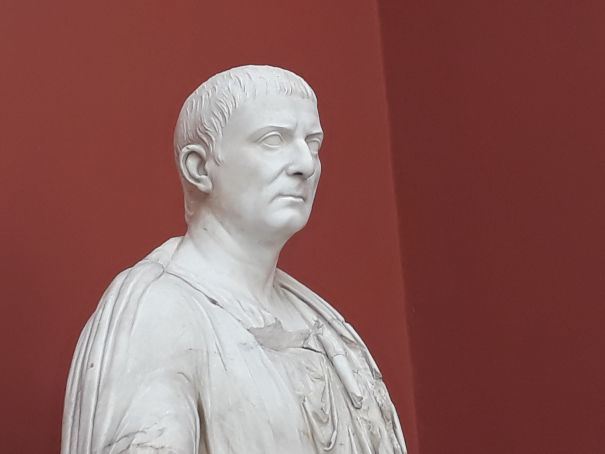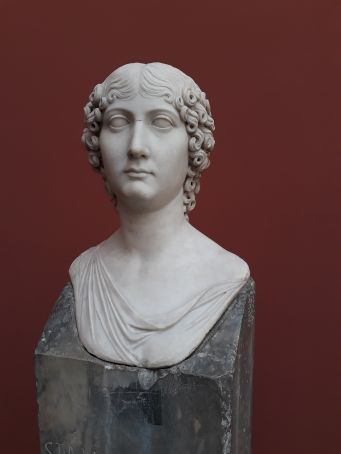Nemi's dispersed treasures
How ancient treasures from the sacred Temple of Diana on the shore of Lake Nemi, near Rome, ended up in Nottingham and Copenhagen.
In 1885, when Sir John Savile Lumely, Her Britannic Majesty's ambassador to Italy, began excavating the area of the Temple of Diana at Lake Nemi in the Castelli Romani, Rome had been the capital of Italy for less than 15 years.
The city was in an upheaval of expansion, restructuring and modernisation that involved the demolition and rebuilding of entire quarters in the historic centre. During the works an enormous quantity of ancient art came to light. At the time, not much thought was given to preservation and the protection of the new nation's historic heritage, and archaeological digs were little more than glorified treasure hunts.
Sir John was approaching retirement and Rome was considered a suitable backwater where the diplomat could relax after a long and often turbulent career. But it also suited the ambassador particularly well as he was a passionate amateur archaeologist and the Rome post gave him the ideal opportunity to indulge his hobby.
He turned his attention to the lesser known sites outside the city boundaries and decided to concentrate on the Lake Nemi crater where ancient sources had mentioned an important cult centre dedicated to the goddess Artemis-Diana.
Although it was recorded that a number of important pieces of sculpture had been purloined from the site over the centuries, Nemi was, from an archaeologist's point of view, virgin territory when Sir John arrived, and he was full of anticipation.
Only a few years earlier, John Turtle Wood – an English surveyor and architect employed by the Ottoman railways – had made the spectacular discovery of the most celebrated temple dedicated to the Goddess Diana at Ephesus (in present-day Turkey), considered one of the Seven Wonders of the ancient world.
Sir John probably nurtured secret hopes of a similar triumph. In actual fact, the astonishing number of finds which he unearthed during eight months excavating far surpassed his expectations. The crater was a veritable treasure trove, virtually untouched since the times of the Caesars.

Sir John had negotiated the rights to dig in the Lake Nemi crater with the landowner, Prince Filippo Orsini, with the agreement that all the finds were to be divided between them. Unlike Sir John, however, Orsini’s interest was not of a scientific nature. He was in serious financial difficulties and he saw the excavations as a probable source of income.
Roman antiquities were much in demand with foreign tourists as souvenirs to take home and museums in northern Europe and the USA were willing and eager to pay high prices for finds that would add prestige to their collections.
The agreement the prince made with the ambassador was that all the booty found on the site should be divided between them. However Orsini appropriated the items which he thought would most readily appeal to collectors and which would command the highest prices.
In the end, Sir John was left with the "pickings", which nonetheless amounted to seven bales and sixteen cases full of ancient Roman antiquities, a total of 1,586 items in bronze, marble and terracotta, as well as several hundred Roman coins, all of which he donated to his home town of Nottingham.
Orsini terminated their agreement when the English aristocrat began to turn up whole statues, including a particularly fine female herm, a male head which resembled Julius Caesar, and a bearded god's bust in Greek island marble. The prince realised that an authentic treasure trove was almost within their grasp – and he was not prepared to share it. His refusal to renew their contract when the license expired was one of the most bitter disappointments of Sir John's life.
All the pressure that the British and American Archaeological Society in Rome put to bear on the prince to make him change his mind was to no avail. Orsini no longer wanted partners and when he subsequently re-opened the dig on his own account, he was rewarded with the discovery of a whole room full of sculpture – a princely cache, which he sold to the Danish beer magnate Carl Jocobsen and which was destined to enhance his burgeoning sculpture collection.
Sir John had actually stumbled on this important find when he had unearthed the herm of a Roman matron called Fundilia Rufa, one of the few pieces of portrait sculpture that he was able to take home to Nottingham. Fundilia, who was named on her plinth, was standing with a group of companions inside a votive chamber set against the back wall of Diana's temple.
Orsini's men uncovered the entire group of sculptures, including a full figure statue of the same Fundilia, along with the statue of the man, Fundilius Doctus, who had paid her memory a unique tribute.

His inscription identified him as Fundilius Doctus, a professional actor (Parasitus Apollonis, as the Romans called them) and explained that he was an enfranchised slave, who had belonged to Fundilia's family. The statue of Doctus is considered to be a masterpiece of Roman sculpture, and was in such perfect condition when it was found that for a long time it was suspected of being a fake.
In Imperial Rome, many actors made personal fortunes. Evidently, Fundilius Doctus, a popular performer, had purchased his freedom and was rich enough to commission an artist to create his likeness, as well as the herm and statue of his former owner Fundilia, whom he must have held in high regard. The statues of both Fundilia and Fundilius are now in Copenhagen, along with the other herms that were found in the chapel.
The most surprising aspect of this discovery, however, was the fact that at least some of these sculptures in this same votive chamber were also actors, or connected to the acting profession. One was a comic player called Lucius Faenius Faustus. His inscription related that he specialised in the role of the “Parasite” – a rich man's dependent, or hanger-on, and a common figure of fun in first-century Roman society. Another was Norbanus Sorex, who must have been a famous performer, as his portrait was also found in the ruins of Pompeii.
There were three other women. One, identified as Staia Quinta, was described as a hairdresser, while the other two cannot be identified with any certainty because the herm shafts were separated from the heads during Orsini's hasty excavations. The company was completed by a Quintus Hostius Capito, a teacher of the highly esteemed discipline of oratory, and an Aninius Rufus, who must have been related to Fundilia.

Carl Jacobsen was apparently greatly satisfied with the Nemi purchases when they finally arrived in Denmark and he could appreciate their high artistic quality. But unfortunately he did not know where to put them. A couple of years previously, when the Christiansborg Palace had burnt down, Carl and his wife, Ottilia, had offered their private sculpture collection to the city of Copenhagen to compensate the loss of the royal collection.
A site for a new gallery was chosen in Dantes Plads, near the celebrated Tivoli Gardens, but, due to a series of hitches, the building was not ready until 1897. Even before it was inaugurated, however, the exhibition space had become inadequate. Throughout the years of construction, the ever enthusiastic Jacobsen had continued to acquire more and more pieces of both antique and contemporary sculpture. Among them were a few important pieces that had been discovered a couple of centuries earlier by Cardinal Despuig, advisor to Pope Pius VI, who had done some excavation work in Nemi.
Finally, in 1906, the Ny Carlsberg Glyptotek opened its antique sculpture collection in a brand new state-of-the-art building where the various rooms are decorated to harmonise with the period of the works they contain, from the ancient Egyptians to the Etruscans, the Greeks and the Romans, and where the Nemi collection is on view today.
At the Nottingham City Museum and Galleries, situated within the old walls of the one time mediaeval castle, only a selection of Sir John's finds are normally on display due to problems of space and a more recent focus on local history.
However, a major exhibition, entitled The Treasures of Nemi was held in 2013, drawing an enthusiastic following. At the moment, the herm of Fundilia Rufa stands in the portraits section of the Gallery of Art. Other sample pieces from Sir John's collection are on show in the Myth, Power and Beauty section of the museum. In addition, the Collections Gallery, which concentrates on the history of the museum and its major 18th/19th-century donors displays a sample selection of the Nemi antiquities.
By Margaret Stenhouse
This article was published in the October 2021 online edition of Wanted in Rome magazine.


















